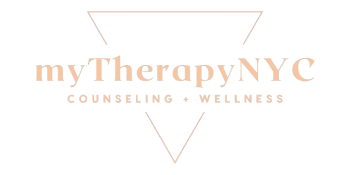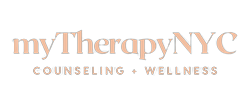Postpartum depression (PPD) is a serious health condition that affects 10-20% of new mothers worldwide. However, its prevalence varies significantly across cultures and is influenced by the economic status of the countries studied, indicating that this statistic may underestimate the prevalence of PPD. Awareness and psychoeducation about PPD are crucial, as this condition not only impacts the individual mother but also has profound implications for the entire family unit, including the health of the newborn child. While the symptoms of PPD can overlap with general depression, its distinct trigger lies in biological changes in hormone levels. Effective coping, management, and treatment strategies are essential in working through PPD. This post will define PPD, explore its risk factors, discuss symptoms and diagnosis, and outline treatment options to ensure that women facing PPD receive the support and care they need to navigate this challenging experience with confidence and resilience.
What is Postpartum Depression?
During childbirth, most women undergo profound hormonal, physical, emotional, and psychological changes. These changes are natural and essential for supporting the development and birth of a child. However, for some women, this period can also bring about PPD. Unlike the typical “baby blues,” which generally fade within a week or two after giving birth, PPD is characterized by more intense and prolonged feelings of depression.
PPD shares many symptoms and risk factors with other forms of depression, such as persistent feelings of hopelessness, fatigue, changes in appetite, and interpersonal difficulty. However, what sets PPD apart is its specific onset triggered by postpartum factors, particularly the biological changes in hormone levels following childbirth. These hormonal shifts, combined with the stress and demands of caring for a newborn, can significantly impact a woman’s mental health. Contrary to common perception, PPD can manifest at any point during pregnancy or within the first year after childbirth, not solely immediately postpartum. This extended timeframe reflects the complex interplay of biological, psychological, and social factors that contribute to the development of PPD.
Risk Factors of PPD
The precise triggers of PPD remain unclear, likely stemming from a complex interaction of physical and emotional factors rather than a singular cause. Nevertheless, research has identified biological and environmental risk factors that heighten the likelihood of experiencing PPD and influence its severity.
Certain biological factors can identify mothers at risk for PPD. The sudden decrease in estrogen and progesterone levels after childbirth can significantly impact mood. Additionally, reduced levels of oxytocin have been identified as predictive of both postpartum depression and the severity of its symptoms.
Current and historical psychological factors are also significant risk factors. Individuals with previous experiences of depression or anxiety may be particularly vulnerable during this period to developing PPD. Unresolved emotional challenges, compounded by the stresses and uncertainties of new motherhood, can trigger the onset of PPD as well as predict the severity of the symptoms.
Several environmental and social factors increase the risk of PPD, including insufficient social support, financial strain, marital stress, and adverse life events. Women who have experienced multiple adverse life events, such as childhood or adulthood sexual abuse, are at heightened risk of developing PPD. Inadequate support or strained relationships can exacerbate a new mother’s difficulties, increasing her susceptibility to emotional distress and isolation.

Symptoms of PPD
Diagnosis of PPD involves identifying a cluster of depressive symptoms that persist for at least two weeks. According to the Diagnostic and Statistical Manual of Mental Disorders (DSM-5), PPD is categorized under major depressive disorder with peripartum onset, distinguishing it as a specific subtype of depression. Symptoms of PPD include persistent depressed mood, loss of interest or pleasure, changes in sleep patterns, psychomotor agitation or retardation, feelings of worthlessness or guilt, fatigue or loss of energy, suicidal thoughts, difficulty concentrating, and changes in weight or appetite.
PPD not only affects the mother’s mental health but also has significant implications for maternal-infant dynamics and child development. It can lead to difficulties in bonding with the infant, challenges in breastfeeding, and negative parenting behaviors. Marital discord may also arise as a consequence of PPD. Furthermore, children of mothers with untreated PPD may experience adverse outcomes in both physical and psychological development. Prompt diagnosis and treatment can mitigate these risks.
Diagnosis & Treatment
A clinical assessment for diagnosing postpartum depression (PPD) can be conducted using methods such as the Structured Clinical Interview. Alternatively, self-report measures like questionnaires have gained popularity in clinical settings. The Edinburgh Postnatal Depression Scale (EPDS) is particularly prominent and widely utilized.
Research indicates that despite diagnosing depressive episodes, many women do not seek treatment. Women must understand that this situation was not triggered by them or attributable to any fault of theirs. Feelings of self-blame could exacerbate PPD symptoms. Primary treatments for PPD involve psychotherapy in either an individual or in a group setting. Some may also require antidepressant medications alongside counseling. For lactating and breastfeeding women, pharmacological options include weighing the benefits of breastfeeding against the risks of antidepressant use and untreated depression.
Along with medication and counseling, mothers need to adopt some lifestyle changes. Integrating physical activity into your routine, such as taking walks with your baby and incorporating other forms of exercise. Rest is crucial, so getting enough sleep and eating nutritious foods while avoiding substances. Focussing on achievable tasks, including incorporating self-care, is vital for your well-being. Combat feelings of isolation by staying connected with your partner, family, and friends. Seek support from other mothers who can offer understanding and companionship. Finally, reach out for help to enhance your ability to care for yourself and your baby.
Recognizing the unique challenges posed by PPD is crucial for effective treatment and support. Early intervention, such as therapy and sometimes medication, can significantly improve outcomes for both the mother and her family. By understanding and addressing the complex interplay of biological, psychological, and social factors involved in PPD, healthcare providers can better support women through this challenging period and promote long-term mental health and well-being for the entire family.
Are you interested in exploring your postpartum symptoms in therapy? Reach out to myTherapyNYC to find out which of our therapists would be a good fit for you!
How has this blog changed your perspective on postpartum depression? Join the conversation in the comments below!
- Understanding Parental Burnout: Effective Coping Strategies - January 16, 2025
- Understanding Postpartum Depression - August 29, 2024
- Why Am I So Angry? - November 14, 2023



